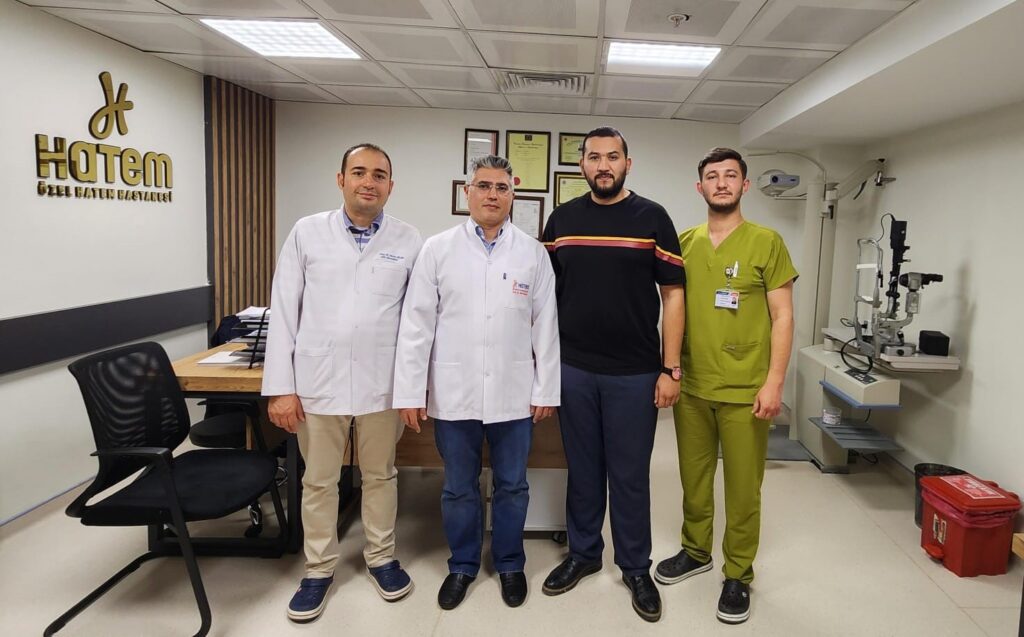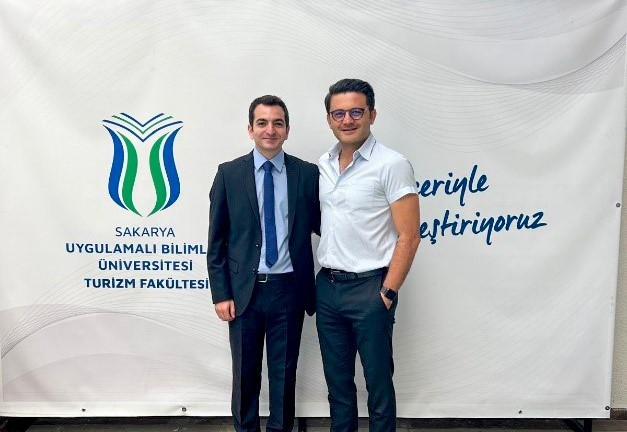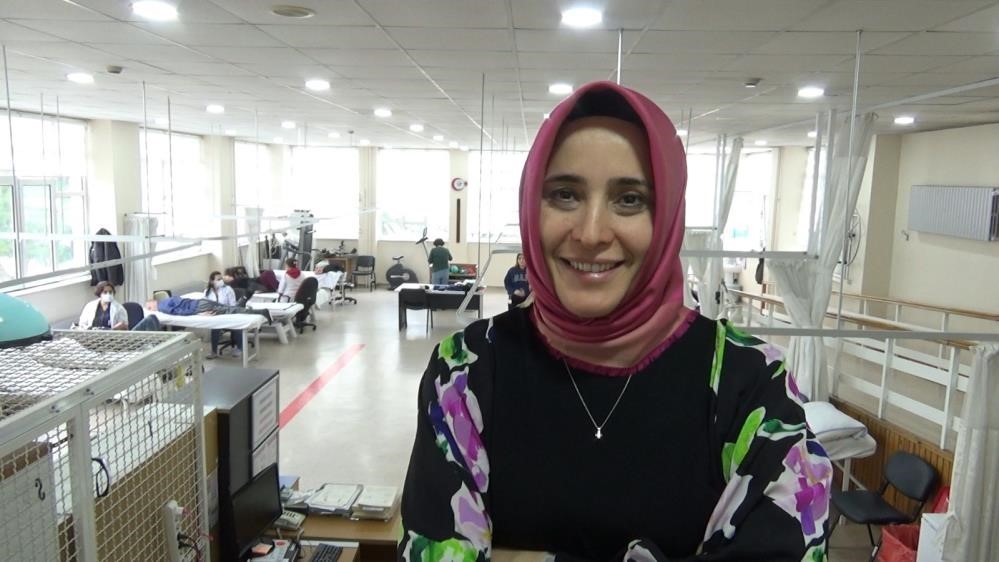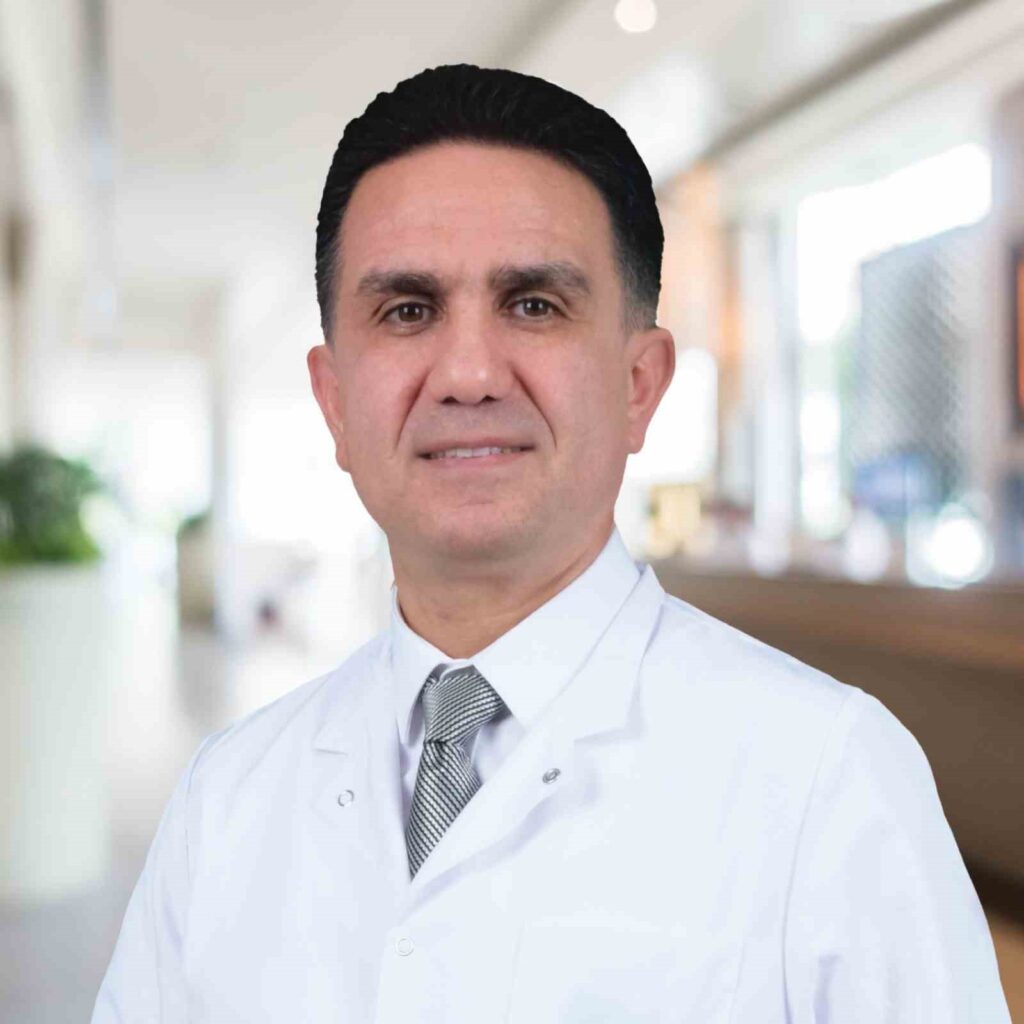Patient Hatem, who experienced vision loss in his left eye, has recovered his health
A patient who suffered vision loss in his left eye due to keratoconus regained his health through a corneal transplant performed at Gaziantep Private Hatem Hospital. Ekber Atay, who lives in Gaziantep, had been experiencing vision loss for a long time due to keratoconus disease…

A patient who experienced vision loss in his left eye due to keratoconus disease regained his health with a corneal transplant performed at Gaziantep Private Hatem Hospital.
Ekber Atay, who lives in Gaziantep, had been experiencing vision loss and severe headaches for a long time due to keratoconus disease. Despite using lenses and glasses, Atay, whose vision loss was increasing, underwent a corneal transplant at Gaziantep Private Hatem Hospital. Atay, who is happy to regain his health with a successful operation performed by Eye Health and Diseases Specialist Prof. Dr. Mete Güler and Assoc. Dr. Burak Bilgin, emphasized the importance of organ donation.
“I have been experiencing vision problems since my childhood”
Ekber Atay said, “I have been experiencing vision problems since my childhood. Over time, my vision loss worsened. Our doctors said that a corneal transplant was necessary. We had been looking for a suitable donor for a long time. Thankfully, we finally found one and a successful operation was performed. I am doing well now and getting better every day. Organ donation is very important for patients waiting for transplants. I am very grateful to both the donor family and our doctors. I am very happy that thanks to them, I will be able to see clearly again.”
“The cornea is the transparent tissue at the front of the eye”
Eye Health and Diseases Specialist Prof. Dr. Mete Güler, who performed the successful operation at Private Hatem Hospital, provided information about the operation, “The cornea is the transparent tissue at the front of the eye. Corneal transplantation is the process of replacing the patient’s non-transparent cornea with transparent corneal tissue taken from a cadaver. Corneal transplantation is performed for various purposes in eye patients. The most common indication for corneal transplantation is to eliminate opaque cornea and restore transparency. Corneal transplantation can also be performed to maintain eye integrity instead of the examined cornea due to chronic corneal diseases. Sometimes, non-healing ulcers may occur in the cornea after corneal infections, and corneal transplantation can be performed to eliminate these resistant wounds. Rarely, cornea may become opaque and corneal transplantation may be performed for aesthetic reasons. Full-thickness corneal transplantation is performed in cases where the entire thickness of the cornea is affected by diseases. In some cases, corneal diseases may not affect all layers of the cornea. In such cases, partial thickness corneal transplants can be performed. Tissue compatibility is easier to achieve in partial thickness corneal transplants. Our patient Mr. Ekber had a corneal disease called “keratoconus” that emerged in his childhood and progressed over the years, distorting both the shape and transparency of the cornea. We replaced the corneal tissue that could not perform its function properly with transparent corneal tissue taken from a cadaver. The follow-up and treatment of our patient are ongoing. We expect a significant improvement in his vision after the compatibility between the recipient cornea and the donor cornea is established. Surgical technique, appropriate follow-up, and treatment are very important in corneal transplants. Therefore, the patient’s compliance with treatment after the transplant is necessary,” he said.
“At this stage, corneal transplantation comes into play”
Assoc. Dr. Burak Bilgin also stated, “Keratoconus disease in advanced stages may require corneal transplantation surgery by distorting the shape, transparency, and vision of the cornea. Vision can be regained with the transplant of a healthy corneal layer. Symptoms such as pain and discomfort caused by corneal disease improve after corneal transplantation. The disease progresses with changing eyeglass prescription frequently until the 30s. Despite increasing eyeglass numbers, these patients complain of not being able to see well. The disease significantly affects the person’s quality of life. In advanced cases, the cornea becomes significantly thin and pointed, leading to severe vision loss. At this stage, corneal transplantation comes into play,” he said.







